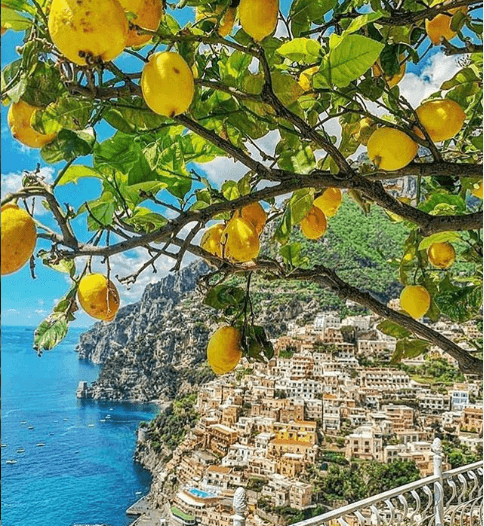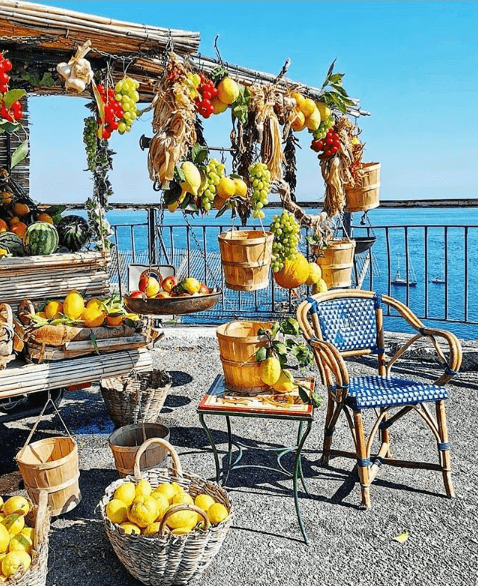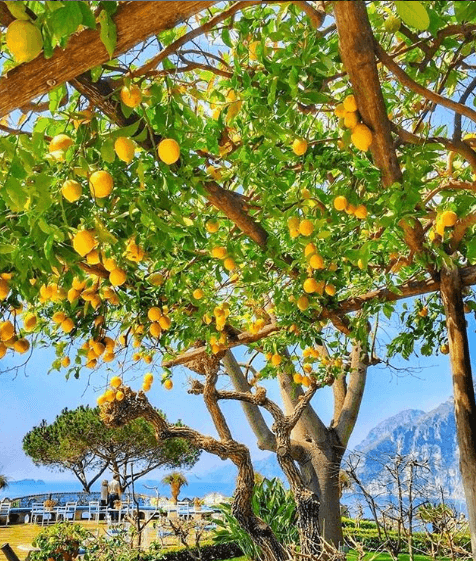Amalfi Coast Lemons: All things to know

All lovers of the Amalfi coast ceramics have had the opportunity to see that one of the most depicted symbols on the handmade masterpieces of our area is certainly lemon. Why is lemon so important in this corner of paradise? Let's find out together!
HISTORY
The lemon on the Amalfi coast was cultivated for the first time during the 11th century, when Amalfi was the most important Italian Maritime Republic and established commercial relations with the most important Mediterranean ports and with the Arabs. The fleets of the Amalfi sailors were always full of this precious citrus; its export had a further significant increase in the centuries from 1400 to 1800, as it was used by foreign populations in the fight against scurvy, a disease that affected people who had a deficiency of ascorbic acid, or vitamin C, of which our lemons are very rich.

(credits: storicatravel)
CULTIVATION TECHNIQUES
Even today, although the demand for this precious citrus fruit is constantly growing, local population rigorously respects traditional agricultural techniques, cultivating the large lemon trees in the so-called "Macerine", typical terraces of our beloved Coast.
The plants are positioned respecting specific distances and they are protected by a scaffold made from chestnut poles, which allow the plants to be protected in the winter months in which colder temperatures are recorded.
The plots of land of the Amalfi coast have variable sizes but it has been estimated that for each hectare cultivated there are about 800 plants from which you can get to produce 35 tons of lemons.
The cultivation of this precious citrus in the past involved the whole local population and the continuous care of all the plots of land has also allowed the safeguard of the territory
The harvest is practiced several times a year, but it is mainly in the period between March and July that the best fruits arrive.

(Credits: domusmichaeli)
CHARACTERISTICS AND PROPERTIES
The lemon of the Amalfi coast, cultivated in all villages ranging from Positano to Vietri sul mare, given its elongated elliptical shape, takes the name of "Sfusato".
The "sfusato Amalfitano" has a very smooth skin and it shows a citrine yellow color. On average, a lemon weighs about 100/120 gr and contains 4 to 8 seeds inside. The aroma and perfume are intense and very strong, the juice abundant and very acidic.
It is important not to confuse lemon with the classic Cedar. Both belong to the same family but have substantial differences that can be summarized in these few lines:
Lemon is more yellow, smoother and with a thinner rind; Cedar is Large, lumpy and with a very thick rind.
LEMON AT THE TABLE
In addition to its healing properties, "Sfumato Amalfitano" also dominates the tables of our renowned restaurants and the local population. The peel of the Amalfi lemon is the part where the aroma of the fruit can be felt most: the peel, in fact, contains many oxygenated compounds.
From the peels of the " Amalfi Coast Gold" is obtained the Limoncello, great liqueur with a unique and unmistakable flavor, inevitable on the tables of all people who eat a meal in this corner of paradise.
Given its peculiarities, lemon can also be eaten natural, or by adding a pinch of salt or sugar.
However, this typically Mediterranean fruit has always been used to flavor and enhance many recipes based on meat, fish and vegetables of all kinds.
For all the characteristics mentioned above, our lemon has been recognized as a prominent product by national and international authorities with awards that certify its infinite properties.

(credits: francescabologni)
The history, the beauty and the unmistakable flavor of our lemons inspire our artists every day who, with skill and class, create many works of art that have as their protagonist what is certainly the symbol of our beloved Coast best known in all the world.
The artists faithfully respect what are the characteristics of the lemons in the area, just look at the elongated shape of the lemons made in our set dishes with lemon and daisies that faithfully produces the shape, or the details and nuances made in our vase with lemon in light blue background "or you just need to admire the details of our volcanic stone table coffee table lemon on blue background
The items just mentioned are certainly among the most sold in our shop in Conca dei Marini, a stone's throw from the famous Emerald Grotto. All our customers who have already purchased masterpieces in our showroom are really excited to give a touch of color to their dishes and their homes with entirely handcrafted works that represent Lemon, a true symbol of the Amalfi coast.
And you, have you already purchased an item with Amalfi Coast lemons painted on it?
Browse all our online catalog or, in case you have very specific requests, please contact us

(credits anakena88)